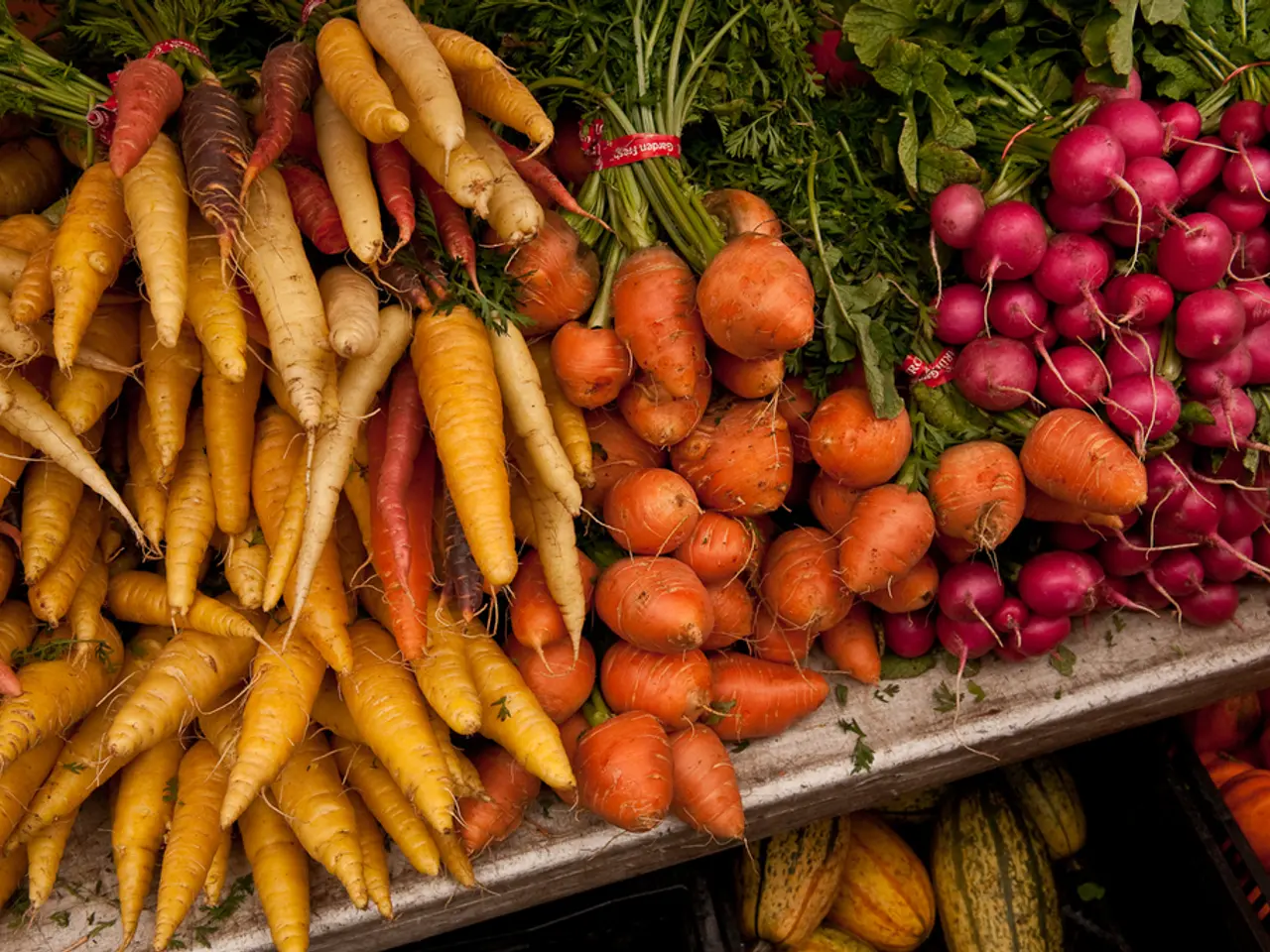Preparing your monthly fruit and vegetable duties in March
March marks the beginning of a new gardening season, with many vegetables ready to be sown and planted. Here are some key tips for growing potatoes, asparagus, rhubarb, beetroot, and carrots in March, based on current gardening guidance.
Starting with potatoes, plant seed potatoes as soon as the soil is workable and dry enough. Prepare the bed by adding compost four to six weeks prior, tilling two to four weeks before, and final bed prep shortly before planting. Encourage the seed potatoes to sprout indoors on a warm, bright windowsill before planting. Plant the potatoes in well-prepared soil, ensuring organic mulch is added on top after planting to maintain moisture.
Asparagus crowns are best planted in early spring, typically in March or April. Prepare the soil by digging a trench around six inches deep, placing crowns about 12 inches apart with buds facing up, then cover with two inches of soil. As spears grow, gradually fill the trench but leave tips exposed. Maintain consistent moisture for the first year to establish crowns. Do not harvest spears in the first year to allow the plants to develop strong roots; harvest lightly in the second year and more fully from the third year onward. Fertilize as spears emerge and after harvest.
Rhubarb crowns can be planted as early as the soil can be worked in spring. Rhubarb requires well-prepared soil and benefits from a sunny spot. Like asparagus, it is a perennial, so after planting, allow the plant to establish without harvesting much in the first year.
Beetroot seeds can be sown outdoors when the soil temperature is consistently around or above 40°F. Beetroot prefers loose, well-drained soil. March is typically suitable for early sowing in cool climates. Keep the soil moist for good germination, and thin seedlings to avoid crowding.
Carrot seeds can be sown directly into well-tilled, loose soil in early spring. Carrots need loose, stone-free soil to develop straight roots. March sowings benefit from increasingly longer day length and warming temperatures, improving germination and growth rates. Keep the soil moist but not waterlogged.
Use a soil thermometer to confirm soil temperatures are suitable before sowing root vegetables and greens. Maintain consistent moisture for asparagus and rhubarb to help establish healthy crowns. Avoid harvesting asparagus spears in the first spring after planting to help plants build energy for future harvests.
Remember, patience is a virtue in the garden during March. The veg plot may still look bare, but with these tips, you'll soon be enjoying the distinctive sweetness of freshly dug and immediately cooked new potatoes, as well as a bountiful harvest of asparagus, rhubarb, beetroot, and carrots.
In addition, March is a good time to plan what to do with the space in the veg plot for the year, prepare bare areas for new crops, and pot up evergreen herbs such as rosemary, bay, sage, thyme, and lavender towards the end of the month. Save leftover seed packets for sowing another batch of the same crop later on.
For those with limited space, use food packaging items such as tin cans, deep trays, small yoghurt pots, and toilet roll tubes as pots for growing annual veg. Protect tree blossom from frost by draping fleece over the tree or moving pots to the warmest, most sheltered part of the patio.
As spring officially begins in March, these practices will set a strong foundation for successful growing of these crops starting in March. Happy gardening!
Start planning your home-and-garden spring activities, as March is an ideal time to sow beetroot seeds and carrot seeds outdoors. Prepare your veggie plot by ensuring the soil temperature is consistently around 40°F for beetroot and loose, stone-free for carrots. Don't forget to keep your home lifestyle-oriented by potting up evergreen herbs like rosemary and lavender towards the end of March.




